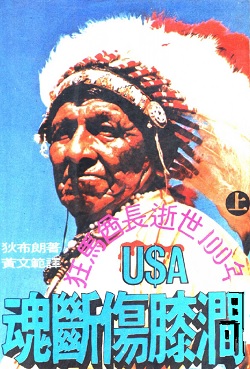Chapter 1 sequence
Since the Lewis and Gluck expeditions to the Pacific coast in the early nineteenth century, the number of published texts talking about the development of the American West has exploded into the tens of thousands.Most of these recorded experiences and observations are concentrated in the thirty-year period from 1860 to 1890, which is also the period covered by this book.It was a time of violence, greed, shamelessness, sentimentality, sentimentality, and unbelievable lawlessness, and those who already had individual liberty had an almost reverent attitude towards the extremes of individual liberty.
During that time, the culture and civilization of the American Indians was destroyed, and from that period, practically all the great myths of the American West came out. , gamblers, gunners, cavalry, cowboys, goddesses, priests, female teachers, yeoman and so on.Occasionally, I also heard the voice of an Indian speaking, but most likely it would not be recorded by the white man's profuse pen.The Indians were the sinister menace of these myths, and if he knew how to write in English, where would he find a printer?Or what about a publisher?
However, those Indian voices of the past have not been completely lost.The few reliable accounts of the history of the American West, recorded by Indians in pictures or in interpreted English, managed to be published in obscure journals, in handbooks, and in books that sold little.By the end of the nineteenth century, the white people's curiosity about the Indians who had survived the war reached a climax. Enterprising newspaper reporters often interviewed soldiers and chiefs, giving them the opportunity to express their opinions on the real situation in the West .The quality of these visits varies widely, depending on the ability of the interpreters, or the willingness of the Indians to speak freely.Some people are afraid of retaliation for telling the truth; some people come to cover up nonsense and talk nonsense to fool the reporters.Read, therefore, with skepticism what Indians say in the newspapers of the day; yet some are masterpieces of cynicism, and some are blazing outbursts of veiled indignation.
Among the richest sources narrated by Indians themselves are the records of treaty meetings and official assemblies of the United States government military and official representatives.In the second half of the nineteenth century, Piedman's shorthand method became popular. When the Indians spoke at the conference, a stenographer sat next to the interpreter.
Even in meetings held in remote western regions, there are usually people present to write down what is said. Due to the slow progress of interpretation, most of what is said can be recorded in regular script. Note: Mixed race. ], he knows two languages, but few people can read and write.Just like the vast majority of spoken people, they and Indians rely on images to express their ideas, so the translated English is full of graphic metaphors and allusions in nature.If an eloquent Indian has a bad interpreter, his speech may become mediocre; but a good interpreter can make a poor speaker sound elegant.
Most Indian leaders were comfortable speaking frankly in meetings with white officials; in the 1870s and 1880s, as they grew older in these matters, they demanded The right to choose their own interpreters and recorders. In the 1880s and 1989s, all members of the various ethnic groups were free to speak. Some elderly people chose this opportunity to describe what they had witnessed in the past, or to summarize their history of the nation.Although the Indians whose civilization encountered the catastrophe era have disappeared in this world, their millions of sentences are still preserved in official records.The transcripts of many of the more important meetings were published in official documents and reports.
My conquest of the American West wanted to write a story in the way the victims experienced it, using these almost extinct oral histories, always in the words they said, and all from these sources.Americans who have studied this period and have been looking westward should look eastward to read this book.
This is not a cheerful book, but history has a way of interfering with the present. People who have read this book may have a clear understanding of what the American Indians are like now after knowing what they were like in the past.They will be amazed when they hear the gentle and rational words spoken by the Indian population. It turns out that the stereotyped American mythology is just cruel barbarism.They may learn the truth about their relationship with the earth from the mouths of these out-and-out environmental protection people.Indians know that life is equal to the earth and its resources.America used to be a paradise, and they could not understand why the invaders from the East were determined to destroy all Indians and America itself.
Those who have read this book, if they have had the opportunity to look at the poverty, slovenliness, and hopelessness of modern Indian reservations, may perhaps really understand why.
Di Brown
April 1970
in Urbana, Illinois

